Many operators face high fuel bills, rising emissions, and reduced output because their boiler efficiency is lower than expected. Without understanding what efficiency really means and how it is measured, companies risk underutilizing equipment, missing savings opportunities, and failing regulatory checks.
The efficiency of an industrial steam boiler typically ranges from 80% to 95%, depending on design, fuel type, and operating conditions. Standard fire-tube and water-tube boilers usually achieve 80–88% efficiency, while modern high-performance units with economizers, condensing heat recovery, and optimized controls can exceed 90–95%. Efficiency is measured either as combustion efficiency (how well fuel energy is converted to heat) or overall thermal efficiency (how much of that heat is delivered as usable steam). Factors such as excess air, fuel quality, insulation, and maintenance strongly affect real-world results.
By understanding efficiency values and influencing factors, plant operators can optimize performance, cut energy costs, and extend boiler lifespan.
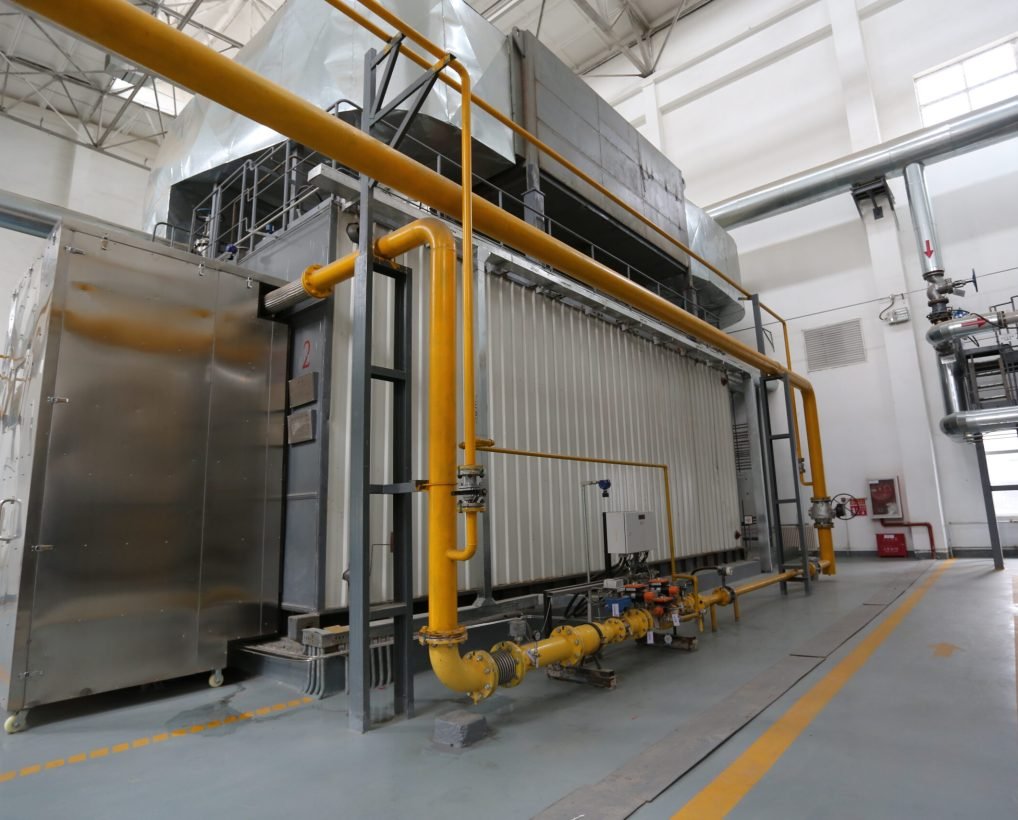
What Are the Main Types of Boiler Efficiency (Combustion vs. Thermal)?
When industries invest in boilers, the focus is always on energy cost reduction and performance reliability. However, many facility managers confuse different types of boiler efficiency, leading to inaccurate performance evaluations and poor decision-making. This confusion can cause underperforming systems to go unnoticed or result in unnecessary fuel waste. To avoid these pitfalls, it’s essential to distinguish clearly between the two most common efficiency measures: combustion efficiency and thermal efficiency.
Combustion efficiency measures how completely fuel is burned inside the furnace, while thermal efficiency evaluates how effectively the boiler transfers the released heat into steam or hot water. Together, these metrics provide a comprehensive view of boiler performance and fuel utilization.
Combustion efficiency and thermal efficiency measure the same aspect of boiler performance.False
Combustion efficiency refers to fuel burn quality, while thermal efficiency reflects heat transfer effectiveness into steam or water.
Understanding these two types of efficiency is crucial because they often complement each other: a boiler may burn fuel efficiently but lose energy through poor heat transfer, or it may transfer heat well but waste fuel due to incomplete combustion.
🔹 1. Combustion Efficiency
Definition: Ratio of the heat released by complete combustion of the fuel to the heat input from the actual combustion process.
Focus: How well the burner mixes fuel and air to minimize unburned fuel and excess oxygen.
Key Losses:
Unburned fuel in ash or flue gas
Heat lost in excess O₂ from over-firing
Typical Ranges:
Natural gas boilers: >85–95%
Oil-fired boilers: 80–90%
Coal-fired boilers: 75–88%
🔹 2. Thermal Efficiency
Definition: Ratio of the useful heat (converted into steam or hot water) to the total heat input from fuel.
Focus: Heat transfer surfaces (tubes, drum, economizer) and how much energy escapes through stack gases or radiation.
Key Losses:
Flue gas temperature above design
Scale or fouling on heat transfer surfaces
Shell radiation losses
Typical Ranges:
Fire-tube boilers: 70–85%
Water-tube boilers: 75–93%
Modern condensing boilers: >95% (HHV basis)
📊 Comparison Table: Combustion vs. Thermal Efficiency
| Aspect | Combustion Efficiency | Thermal Efficiency |
|---|---|---|
| Measures | Fuel burn quality | Heat transfer into steam/water |
| Key Losses | Unburned fuel, excess O₂ | Flue gas temp, fouling, radiation |
| Main Influencers | Burner design, fuel-air ratio | Boiler design, maintenance, insulation |
| Typical Range | 75–95% (depending on fuel) | 70–95% (depending on design) |
| Improvement Methods | O₂ trim control, burner tuning | Economizers, sootblowers, insulation |
📌 Why Both Matter
A boiler with 90% combustion efficiency but 75% thermal efficiency wastes too much energy through hot flue gases.
A boiler with 90% thermal efficiency but 80% combustion efficiency wastes fuel through unburned hydrocarbons.
The goal is to optimize both simultaneously for maximum overall boiler efficiency.
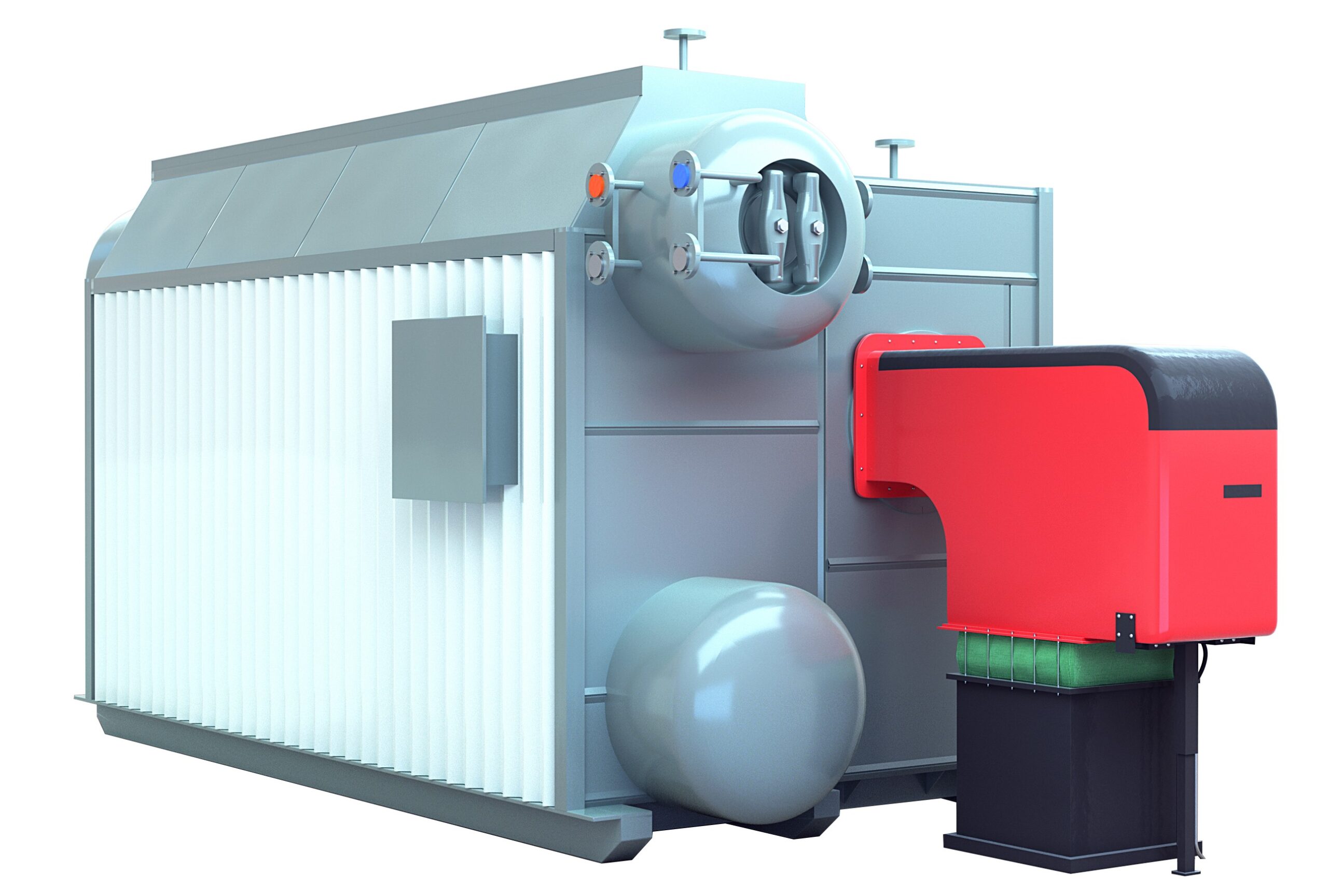
What Is the Typical Efficiency Range of Industrial Steam Boilers by Type?
When industries evaluate steam boilers, efficiency is one of the most decisive factors, because it directly impacts operating costs, fuel consumption, and environmental performance. Choosing the wrong boiler type without considering its typical efficiency range can result in higher fuel bills, reduced output reliability, and even regulatory compliance issues. To avoid costly mistakes, facility managers must understand the typical efficiency ranges of different industrial steam boiler types.
Industrial steam boiler efficiency typically ranges from 70% to over 95%, depending on the design. Fire-tube boilers often achieve 70–85%, water-tube boilers 75–93%, electric boilers close to 100% (point-of-use), and modern condensing boilers can exceed 95% under optimal conditions.
All industrial boilers have nearly the same efficiency regardless of design.False
Boiler efficiency varies widely by type: fire-tube designs are lower, while water-tube, electric, and condensing boilers achieve higher ranges.
This difference is why industries choose different boiler technologies depending on their priorities: low investment cost, high pressure capacity, or maximum energy efficiency.
🔹 Typical Efficiency Ranges by Boiler Type
| Boiler Type | Typical Efficiency Range | Notes |
|---|---|---|
| Fire-Tube Boilers | 70–85% | Compact, lower cost, but limited efficiency due to larger heat losses. |
| Water-Tube Boilers | 75–93% | Higher pressure/temperature capacity, better heat transfer. |
| Electric Boilers | ~99% (at point-of-use) | No combustion losses, but true efficiency depends on power source generation. |
| Condensing Boilers | 90–98% (with return temp < 55°C) | Recovers latent heat from flue gas condensation, highly efficient in low-temp return systems. |
| Coal-Fired CFB Boilers | 75–90% | Efficiency depends on coal quality, ash content, and combustion system. |
| Biomass Boilers | 70–88% | Efficiency affected by fuel moisture, particle size, and feeding system. |
📊 Example: Fire-Tube vs. Water-Tube Efficiency Profile
| Parameter | Fire-Tube Boiler | Water-Tube Boiler |
|---|---|---|
| Pressure Capability | Low to medium (<30 bar) | High (>100 bar possible) |
| Efficiency Range | 70–85% | 75–93% |
| Best Use | Small-medium industries | Power plants, high-capacity |
| Limiting Factor | Heat transfer surface area | Higher cost & complexity |
📌 Why These Ranges Matter
Cost: Even a 2–3% efficiency gain translates into thousands of dollars saved annually in fuel.
Compliance: Higher efficiency = lower CO₂ and NOₓ emissions.
Application Suitability: A food factory might choose a fire-tube boiler for simplicity, while a utility plant requires a water-tube boiler for pressure and capacity.
✅ Summary:
Industrial steam boiler efficiency depends strongly on design. Fire-tube boilers are reliable but limited in efficiency, water-tube boilers provide higher performance for demanding operations, electric boilers achieve nearly perfect conversion efficiency, and condensing boilers surpass all others in certain applications. Correct selection ensures the best balance between fuel savings, performance, and lifecycle cost.
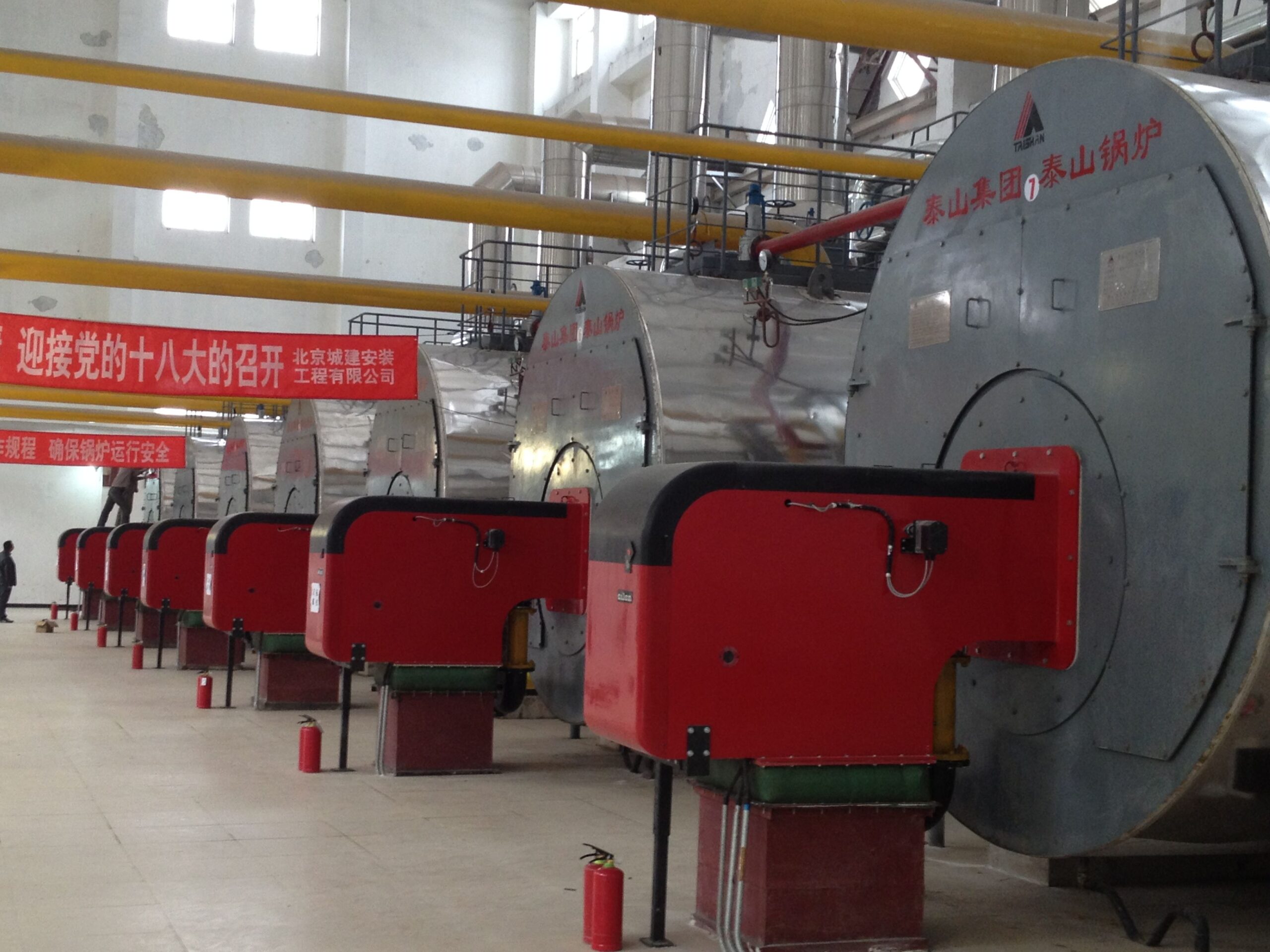
How Do Fuel Type and Combustion Quality Impact Boiler Efficiency?
Industrial boilers rely on fuel combustion as their primary source of heat, which means the type of fuel and the quality of combustion directly determine how much of the input energy is converted into useful steam. Poor fuel choice or suboptimal combustion leads to lower efficiency, higher operating costs, and excess emissions. On the other hand, selecting the right fuel and maintaining high combustion quality ensures maximum efficiency, lower carbon footprint, and longer equipment life.
Fuel type impacts boiler efficiency through its calorific value, moisture content, ash/impurities, and combustion properties, while combustion quality affects air-to-fuel ratio, flame stability, and heat transfer. High-quality fuels with optimized combustion systems result in higher efficiency and lower emissions.
All fuels deliver the same boiler efficiency if burned properly.False
Efficiency varies significantly: natural gas can exceed 90% efficiency, while wet biomass may achieve below 75% due to moisture losses.
This means efficiency is never determined by design alone — the fuel and combustion process must always be considered together.
🔹 Efficiency Differences by Fuel Type
| Fuel Type | Calorific Value (kcal/kg or kcal/Nm³) | Typical Boiler Efficiency Range | Key Efficiency Factors |
|---|---|---|---|
| Natural Gas | ~8,500–9,500 kcal/Nm³ | 90–95% | Clean combustion, low excess air requirement. |
| Fuel Oil (Diesel, HFO) | 9,000–10,500 kcal/kg | 85–92% | Viscosity, atomization quality, sulfur content. |
| Coal | 3,500–7,500 kcal/kg | 75–88% | Ash handling, coal grinding, moisture removal. |
| Biomass | 2,500–4,500 kcal/kg (variable) | 70–88% | High moisture reduces efficiency, needs drying. |
| Electricity | 860 kcal/kWh equivalent | ~99% (point-of-use) | No combustion losses, but depends on grid efficiency. |
🔹 Combustion Quality Factors
The same fuel can deliver very different efficiencies depending on how well it is burned. Key factors include:
Air-to-Fuel Ratio
Too little air → incomplete combustion, CO emissions, efficiency loss.
Too much air → heat carried away in flue gas, lowering efficiency.
Burner Technology
Modern low-NOx burners improve flame stability and mixing.
Proper atomization in oil burners reduces unburned fuel.
Fuel Preparation
Pulverized coal burns more completely than lump coal.
Biomass requires proper drying and size reduction.
Flue Gas Monitoring
Continuous O₂ and CO measurement helps maintain optimal combustion conditions.
📊 Example: Effect of Combustion Quality on Efficiency
| Fuel | Poor Combustion Efficiency | Optimized Combustion Efficiency | Efficiency Loss Source |
|---|---|---|---|
| Gas | 85% | 92% | Excess air, improper burner tuning |
| Oil | 80% | 90% | Poor atomization, soot buildup |
| Coal | 72% | 86% | Incomplete burning of carbon |
| Biomass | 65% | 82% | High moisture, unburned particles |
📌 Why This Matters
Fuel cost savings: A 5% efficiency gain in a 20-ton/hour boiler can save tens of thousands of dollars annually.
Environmental compliance: Better combustion reduces NOₓ, SO₂, and particulate emissions.
Reliability: Poor combustion causes fouling, slagging, and tube corrosion.
✅ Summary:
Boiler efficiency is not fixed — it depends on both fuel type and combustion quality. Natural gas offers the highest efficiency with minimal emissions, while biomass and coal require advanced combustion systems to achieve acceptable performance. Maintaining proper air-fuel ratios, burner tuning, and fuel preparation is essential for maximizing efficiency and minimizing costs.
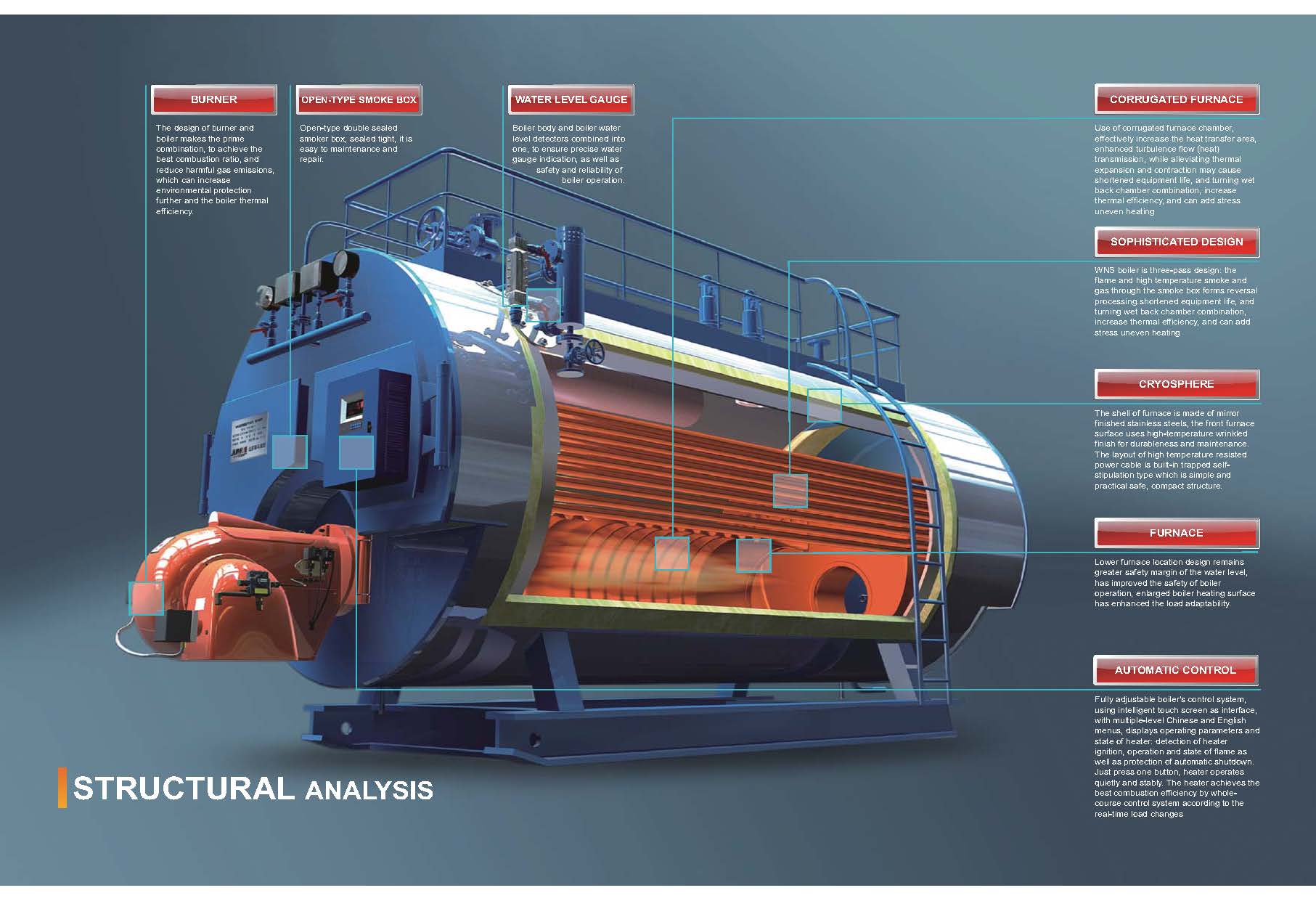
What Role Do Economizers, Air Preheaters, and Condensing Units Play in Efficiency?
When boilers run without heat recovery systems, a significant portion of fuel energy is lost in hot exhaust gases. This wasted heat directly reduces boiler efficiency and drives up fuel costs. As energy prices rise and emission limits tighten, plants that ignore waste heat recovery face higher operating costs and compliance risks. The solution lies in installing economizers, air preheaters, and condensing heat recovery units, which capture and reuse waste heat to improve overall system efficiency.
Economizers recover heat from flue gases to preheat feedwater, air preheaters warm incoming combustion air, and condensing units extract latent heat from flue gas moisture — together improving boiler efficiency by 5–15% while lowering fuel consumption and emissions.
This makes them essential tools in both industrial and commercial boiler plants seeking peak energy performance.
Adding an economizer or air preheater typically improves boiler efficiency by at least 5%.True
By reducing the fuel energy required to reach steam temperature, heat recovery devices capture exhaust heat that would otherwise be wasted.
🔹 Role of Each Component
1. Economizer
Function: Transfers residual heat from flue gas to boiler feedwater.
Impact: Reduces fuel demand by raising feedwater temperature before it enters the boiler.
Typical Gain: 3–7% efficiency improvement.
2. Air Preheater (APH)
Function: Recovers flue gas heat to warm incoming combustion air.
Impact: Hotter combustion air → faster, cleaner fuel burning.
Typical Gain: 2–4% efficiency improvement.
Additional Benefit: Reduces unburned carbon in ash (coal/biomass).
3. Condensing Unit / Condensing Economizer
Function: Cools flue gases below dew point (~55°C) to recover latent heat of vaporized water.
Impact: Provides the largest potential efficiency boost, particularly for natural gas boilers.
Typical Gain: 5–10% efficiency improvement.
Constraint: Works best with fuels low in sulfur (e.g., natural gas), as acid condensation from coal/oil flue gas can cause corrosion.
📊 Efficiency Contributions by Device
| Device | Efficiency Improvement (%) | Best Fuel Type | Notes |
|---|---|---|---|
| Economizer | 3–7% | All fuels | Most common upgrade. |
| Air Preheater | 2–4% | Coal, biomass, oil | Enhances combustion stability. |
| Condensing Unit | 5–10% | Natural gas, biogas | Requires corrosion-resistant materials. |
🔹 Combined Effect
When applied together, these systems can yield 10–15% total efficiency improvement, reducing both fuel consumption and CO₂ emissions. For example:
A 20-ton/hr natural gas boiler at 85% efficiency consumes ~1,000 Nm³/hr gas.
Adding an economizer (+5%) and condensing unit (+8%) increases efficiency to ~98%.
This saves ~150 Nm³/hr gas, cutting annual fuel costs by hundreds of thousands of dollars.
📌 Why It Matters
Fuel Savings: Faster return on investment (ROI), often within 1–3 years.
Sustainability: Lower CO₂, NOₓ, and particulate emissions.
Extended Equipment Life: Reduces thermal stress by moderating flue gas temperatures.
Regulatory Compliance: Helps meet energy efficiency mandates.
✅ Summary:
Economizers, air preheaters, and condensing units are critical heat recovery systems that prevent energy loss and boost boiler performance. Economizers preheat feedwater, air preheaters improve combustion efficiency, and condensing units reclaim latent heat. Together, they can raise boiler efficiency by up to 15%, providing strong financial and environmental benefits.
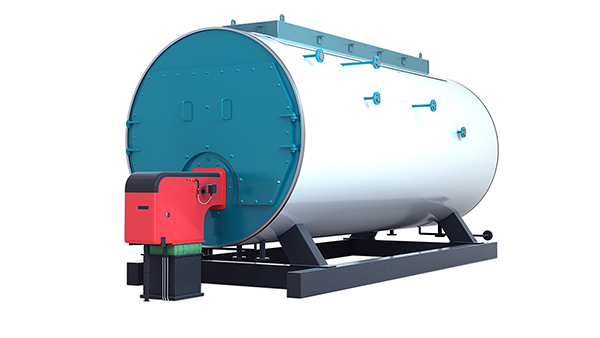
How Do Operating Conditions and Maintenance Practices Affect Long-Term Efficiency?
Boilers are capital-intensive assets, but their efficiency does not remain constant over time. Without proper operational control and preventive maintenance, boiler performance declines due to scaling, fouling, poor combustion, leaks, and suboptimal controls. This efficiency drop leads to higher fuel consumption, higher emissions, and greater wear on equipment. The key to sustaining long-term performance is maintaining favorable operating conditions and implementing proactive maintenance practices, which together minimize energy loss and extend equipment lifespan.
Long-term boiler efficiency depends heavily on stable operating conditions (pressure, load, fuel quality, water treatment) and disciplined maintenance practices (cleaning, calibration, inspection). Proper management can sustain or even improve efficiency, while neglect can cause losses of 10–20% over time.
Consistent operational monitoring and preventive maintenance help ensure boilers deliver designed efficiency across decades of service.
Scaling and fouling in boiler tubes have little effect on efficiency.False
Even a 1 mm layer of scale can reduce heat transfer efficiency by 10%, leading to significant fuel wastage.
🔹 Operating Conditions That Influence Efficiency
Load Fluctuations
Boilers run most efficiently at 60–90% of rated load.
Frequent cycling or prolonged low-load operation increases standby losses and reduces combustion efficiency.
Fuel Quality & Combustion
Coal with high ash, biomass with high moisture, or low-calorific gas can all reduce combustion efficiency.
Proper fuel preparation (e.g., pulverization, drying, blending) improves performance.
Water Quality & Treatment
Poor water chemistry causes scaling and corrosion, reducing heat transfer.
Chemical dosing and deaeration protect against deposits and oxygen corrosion.
Steam Pressure & Temperature Control
Operating far from design pressure/temperature lowers thermodynamic efficiency.
Over-pressurization or under-pressurization increases fuel consumption.
🔹 Maintenance Practices That Sustain Efficiency
| Maintenance Practice | Impact on Efficiency | Frequency |
|---|---|---|
| Tube Cleaning (mechanical/chemical) | Restores heat transfer, prevents scaling | Quarterly to annually |
| Burner Calibration & O₂ Tuning | Maintains optimal combustion, prevents excess air/fuel waste | Monthly to quarterly |
| Leak Detection & Repair | Prevents steam/water/fuel losses | Continuous monitoring |
| Feedwater & Condensate Treatment | Minimizes scaling/corrosion, keeps heat transfer surfaces clean | Daily checks |
| Flue Gas Analysis | Optimizes air-fuel ratio | Monthly |
| Safety Valve & Control Calibration | Ensures safe & stable operation at design conditions | Annual |
📊 Impact of Maintenance vs. Neglect on Boiler Efficiency
| Condition | Efficiency Loss (%) | Fuel Cost Impact (20 t/h boiler, NG fuel) |
|---|---|---|
| 1 mm Scale on Tubes | –10% | +$150,000/year fuel cost |
| Fouled Air Preheater | –3% | +$45,000/year |
| Burner Out of Calibration | –4–6% | +$60,000–90,000/year |
| Regular Preventive Maintenance | 0% (sustained efficiency) | No added cost |
🔹 Why It Matters
Financial Impact: Even small efficiency drops multiply across years of operation and high steam demand.
Reliability: Well-maintained boilers suffer fewer breakdowns, reducing downtime.
Environmental Compliance: Inefficient boilers emit more CO₂, NOₓ, and particulates.
Asset Life: Preventive maintenance can extend service life by 5–10 years, reducing replacement costs.
✅ Summary:
Boiler efficiency is not just about initial design; it is equally shaped by how the system is operated and maintained. Stable loads, good fuel/water quality, and calibrated controls optimize conditions, while regular cleaning, inspections, and combustion tuning preserve performance. Plants that combine strong operations with preventive maintenance sustain high efficiency over decades, while those that neglect these practices pay the price in higher fuel bills, emissions, and premature equipment failure.
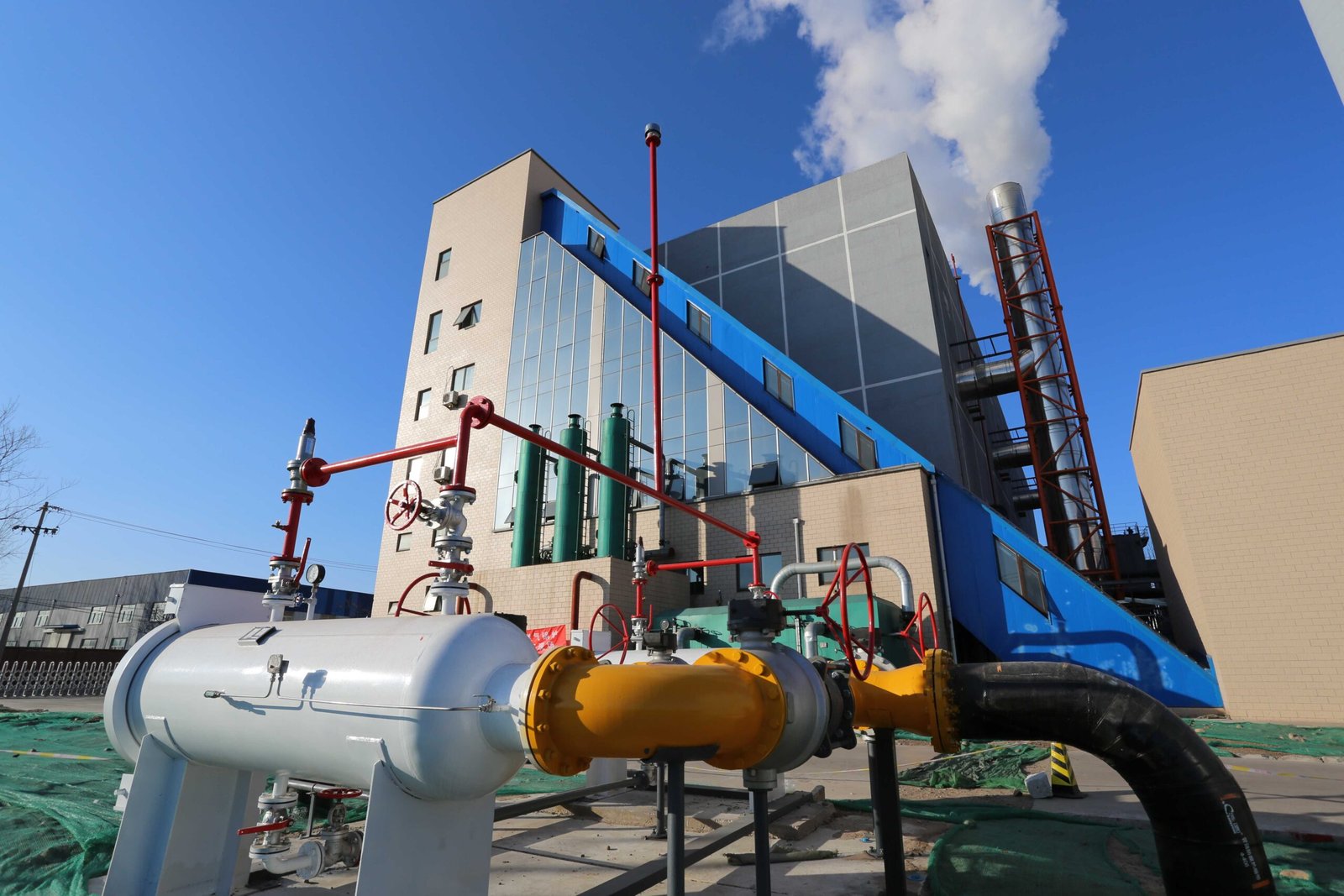
What Methods Are Used to Test and Verify Boiler Efficiency On-Site?
Boilers are designed with a rated efficiency, but actual efficiency often drifts over time due to scaling, combustion imbalance, or poor maintenance. If not tested regularly, operators may underestimate fuel losses, leading to higher operational costs and emissions. The solution is on-site efficiency testing, which validates performance under real conditions, identifies hidden inefficiencies, and guides corrective actions such as burner tuning, cleaning, or retrofitting.
Boiler efficiency is tested and verified on-site using methods such as the direct (input-output) method, the indirect (heat loss) method, and real-time flue gas analysis. These approaches measure fuel input, steam or heat output, and stack losses to calculate actual efficiency and detect opportunities for improvement.
Regular testing allows operators to benchmark actual performance against design values, ensuring that boilers run safely, economically, and within compliance limits.
Boiler efficiency can only be measured in a laboratory setting.False
Boiler efficiency can be measured directly at the plant using flue gas analyzers, flow meters, and calibrated instruments.
🔹 Key Methods for On-Site Boiler Efficiency Testing
1. Direct Method (Input–Output Method)
Principle: Compares useful heat output (steam) to energy input (fuel).
Formula: Efficiency = (Heat Output / Heat Input) × 100
Advantages: Simple, fast, requires fewer instruments.
Limitations: Less diagnostic—does not show where heat is lost.
2. Indirect Method (Heat Loss Method)
Principle: Calculates efficiency by subtracting various measured losses from 100%.
Common Losses:
Dry flue gas loss
Moisture in fuel and combustion air
Incomplete combustion (CO, unburned fuel)
Radiation & convection losses
Advantages: More accurate, diagnostic—pinpoints sources of inefficiency.
Limitations: Requires more measurements and calculations.
3. Flue Gas Analysis (Portable or Online O₂/CO₂ Analyzers)
Measures oxygen, CO₂, CO, unburned hydrocarbons, and stack temperature.
Identifies excess air, incomplete combustion, and heat losses.
Allows real-time monitoring for continuous optimization.
4. Performance Monitoring with Flow Meters
Steam Flow: Measured with orifice plates, venturi meters, or vortex flow meters.
Fuel Flow: Natural gas (mass or volume flow meters), coal (gravimetric feeders), oil (turbine meters).
Provides precise data for efficiency balance sheets.
📊 Comparison of Boiler Efficiency Testing Methods
| Method | Accuracy | Data Provided | Best Use Case |
|---|---|---|---|
| Direct (Input–Output) | Moderate | Overall efficiency | Quick routine checks |
| Indirect (Heat Loss) | High | Loss breakdown (stack, moisture, radiation) | Detailed audits |
| Flue Gas Analysis | High (real-time) | Combustion efficiency, excess air | Continuous monitoring, burner tuning |
| Flow Meter Balancing | High | Actual steam/fuel ratio | Long-term benchmarking |
🔹 Supporting Tests to Enhance Accuracy
Stack Temperature Monitoring: High stack temperatures indicate fouled heat transfer surfaces.
Blowdown & Water Chemistry Testing: Ensures scaling/corrosion losses are minimized.
Infrared Thermography: Detects insulation failures and radiation losses.
Vibration/Noise Analysis on Burners: Identifies combustion instability.
✅ Why Testing Matters
Economic: Even a 2% efficiency loss in a 20-ton/hour natural gas boiler can add $80,000–$100,000/year in extra fuel costs.
Environmental: Poor efficiency increases CO₂, NOₓ, and CO emissions.
Reliability: Early detection prevents tube failures, overheating, and unplanned shutdowns.
Benchmarking: Testing allows comparison against OEM guarantees and industry norms.
👉 In summary: Boiler efficiency verification is best done using a combination of direct and indirect methods, supplemented by real-time flue gas analysis for continuous monitoring. Plants that regularly test and adjust their boilers save on fuel, extend equipment life, and maintain compliance.
🔍 Conclusion
Industrial steam boiler efficiency varies with design, fuel, and operation. While standard systems achieve 80–88%, advanced models can push beyond 90–95%. Regular measurement and optimization ensure boilers deliver reliable steam at the lowest possible fuel cost.
📞 Contact Us
💡 Looking to improve your boiler’s efficiency? We offer energy audits, system upgrades, economizer retrofits, and efficiency optimization programs for industrial steam boilers.
🔹 Boost your steam boiler efficiency to save fuel, reduce emissions, and maximize uptime. ⚡🔥📊✅
FAQ
What is the typical efficiency of an industrial steam boiler?
Most industrial steam boilers operate with 80%–90% efficiency, depending on design, fuel, and operating conditions.
Fire-tube boilers: 75%–85%
Water-tube boilers: 80%–90%
Condensing boilers: up to 95% (with heat recovery)
How is boiler efficiency calculated?
Two methods are widely used:
Direct Method (Input-Output Method):
Efficiency=Heat Output/Heat Input×100
Indirect Method (Loss Method):
Efficiency=100−(Stack Loss+Radiation Loss+Blowdown Loss)
The indirect method is more detailed and identifies specific areas for improvement.
What factors influence industrial steam boiler efficiency?
Fuel type and quality – Gas-fired units are generally more efficient than coal.
Excess air and combustion tuning – Proper air-fuel ratio minimizes losses.
Heat recovery systems – Economizers and air preheaters improve performance.
Operating pressure and temperature – Higher ratings generally increase efficiency.
Maintenance – Soot buildup, scaling, and leaks can reduce efficiency by 5–10%.
How can boiler efficiency be improved?
Install economizers and condensate recovery systems.
Optimize burner controls for proper air-fuel mixing.
Regularly clean heat transfer surfaces (descaling, soot removal).
Upgrade to modern water-tube or condensing designs.
Implement real-time monitoring and automation for combustion control.
Why is boiler efficiency important for industry?
Higher efficiency reduces fuel consumption, operational costs, and greenhouse gas emissions. Even a 1% efficiency improvement can save thousands of dollars annually in large steam generation facilities.
References
Spirax Sarco – Boiler Efficiency Guide – https://www.spiraxsarco.com
DOE – Industrial Boiler Efficiency Guidebook – https://www.energy.gov
ASME – Boiler Performance Standards – https://www.asme.org
Cleaver-Brooks – Boiler Efficiency Data – https://www.cleaverbrooks.com
Forbes Marshall – Methods of Boiler Efficiency Evaluation – https://www.forbesmarshall.com
IEA – Industrial Energy Efficiency Reports – https://www.iea.org
Babcock & Wilcox – Boiler Efficiency Factors – https://www.babcock.com
Engineering Toolbox – Boiler Heat Losses – https://www.engineeringtoolbox.com
ResearchGate – Boiler Efficiency Studies – https://www.researchgate.net
BioEnergy Consult – Improving Boiler Efficiency – https://www.bioenergyconsult.com

